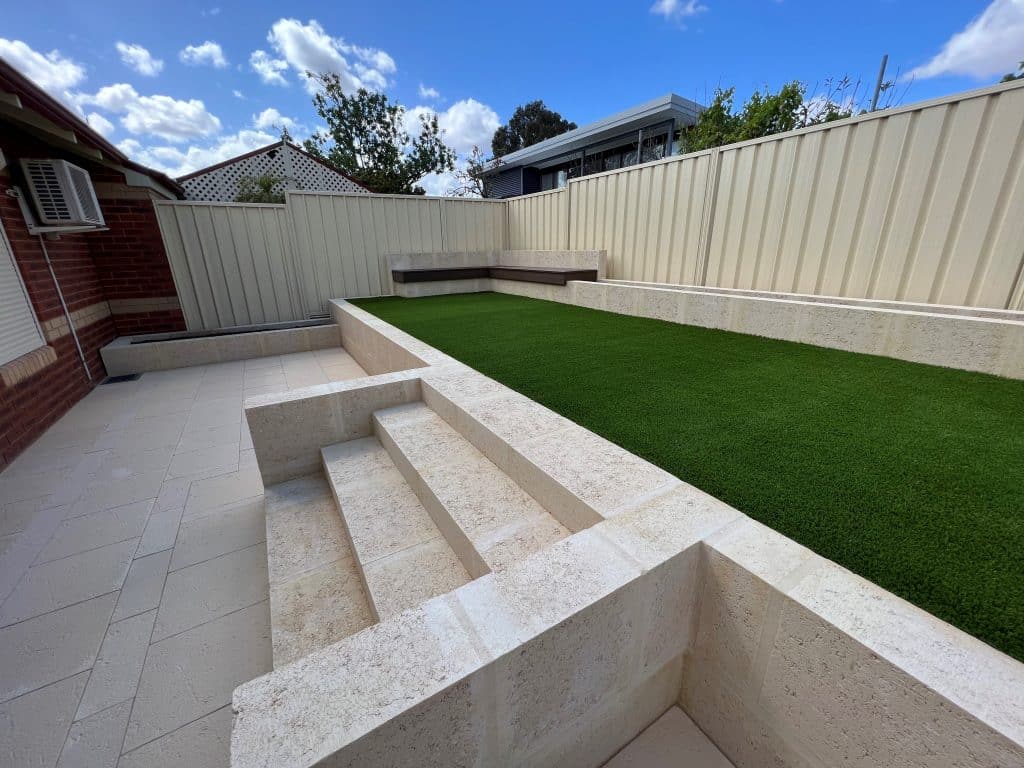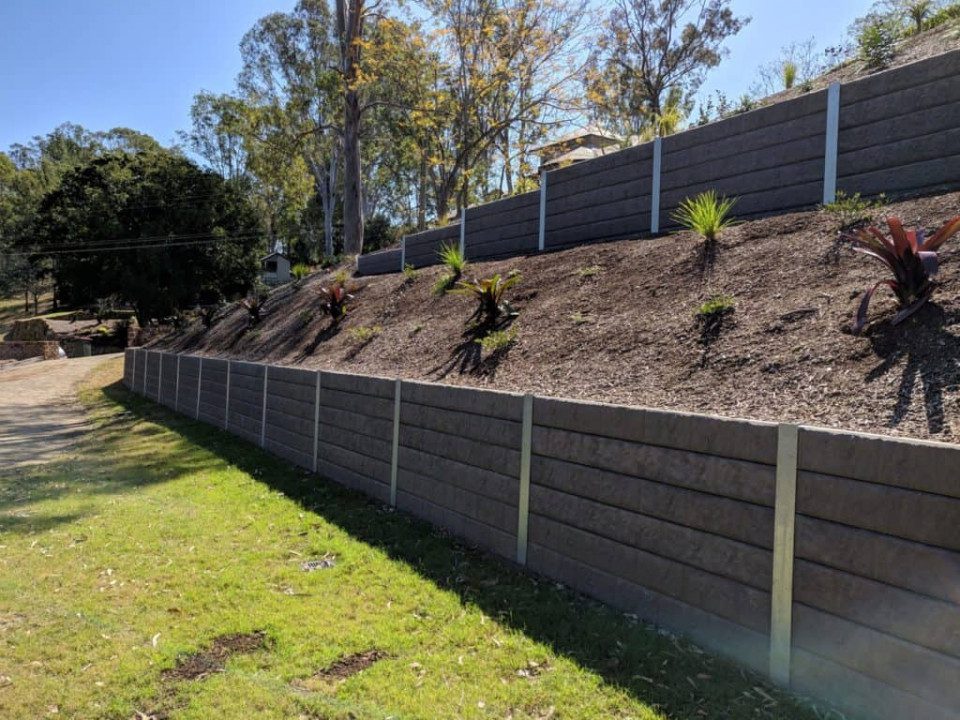Why You Ought To Invest in Sturdy Retaining Walls Sunshine Coast for Your Home
Why You Ought To Invest in Sturdy Retaining Walls Sunshine Coast for Your Home
Blog Article
Guaranteeing Structural Integrity: The Value of Correctly Constructed Preserving Walls in Protecting Against Slope Failing
In the realm of civil engineering and construction, the significance of appropriately constructed retaining wall surfaces in preventing slope failing can not be underrated. These structures serve as critical safeguards against the all-natural pressures that can destabilize slopes and cause potentially disastrous repercussions. Recognizing the meticulous layout factors to consider, construction methodologies, and upkeep methods related to retaining walls is basic in ensuring their efficacy and long life. By discovering the intricate interplay in between these elements, a deeper comprehension of the essential duty that preserving wall surfaces play in maintaining structural stability and avoiding incline failure arises. Retaining Walls Sunshine Coast.
Function of Retaining Walls in Stability
The necessity of preserving walls in making sure slope security is vital in civil design practices. Preserving wall surfaces offer an essential role in protecting against dirt disintegration, managing water drainage, and keeping the architectural integrity of slopes. By sustaining vertical or near-vertical quality modifications, keeping walls help to redistribute lateral stress put in by the dirt, consequently lowering the danger of slope failure.
One trick function of maintaining wall surfaces is to neutralize the pressure of gravity acting on the dirt mass behind them. This is achieved through proper design and building, which thinks about elements such as dirt type, wall height, drain provisions, and prospective additional charge tons. By efficiently keeping dirt within defined boundaries, these frameworks help to stabilize slopes and avoid landslides.
Furthermore, maintaining wall surfaces add to the visual appeals of landscapes while giving practical benefits. They can produce terraced degrees for landscape design, support roads or structures on hills, and boost the general use of sloped surface. Fundamentally, keeping wall surfaces play an essential role in preserving incline stability and guaranteeing the security and long life of civil design projects.
Elements Influencing Wall Surface Efficiency
Factors that influence the efficiency of keeping wall surfaces consist of dirt residential or commercial properties, wall surface style, and exterior loads. Soil residential properties play a critical duty in figuring out the security and efficiency of a preserving wall. Aspects such as soil kind, cohesion, inner friction angle, and groundwater conditions can influence how well a wall surface preserves the dirt behind it. The design of the preserving wall surface is another essential element that affects its effectiveness. Correct wall style takes into consideration variables like wall surface height, wall kind (e.g., gravity walls, cantilever walls), support products, water drainage systems, and construction strategies to guarantee the wall can withstand the side stress applied by the kept soil. Furthermore, outside lots, such as surcharge loads from adjacent structures or traffic, seismic pressures, and water stress, must be very carefully assessed throughout the layout and building phases to ensure the wall surface can properly withstand these exterior forces. By considering these aspects adequately, designers can build keeping walls that successfully prevent slope failing and make sure long-term architectural stability.
Style Considerations for Maintaining Walls
Integrating the critical facets of soil buildings and external loads into the architectural style procedure is vital for developing effective retaining walls that ensure incline stability. When developing retaining wall surfaces, designers need to meticulously examine the features of the bordering soil, including its kind, drain, and compaction residential or commercial properties. Understanding these dirt properties More Bonuses is vital for determining the proper wall surface reinforcement, elevation, and thickness required to withstand the side pressure applied by the dirt mass.
Furthermore, outside tons such as additional charge loads from neighboring structures or website traffic, along with seismic forces, have to be thought about during the design stage. These tons can significantly affect the security and my sources performance of a maintaining wall, necessitating the use of proper layout methods and materials to reduce prospective failing threats.
Additionally, the option of ideal materials, such as concrete, rock, or wood, need to line up with the site-specific problems and visual needs. Factor of safety and security considerations, drain provisions, and building methods are additionally important aspects that influence the overall style and functionality of keeping walls in stopping incline failing. By carefully considering these layout factors to consider, designers can make certain the structural stability and long-term stability of retaining walls.

Building Best Practices for Toughness
When constructing preserving wall surfaces for optimal resilience and durability, adherence to industry-standard methods and precise interest to detail are vital. To make sure the durability of a retaining wall, correct site preparation is necessary.
Integrating support techniques, such as geogrids or steel bars, can enhance the architectural integrity of the keeping wall and protect against potential failings. By following these building best practices, retaining walls can stand up to the test of time and successfully protect against slope failure.
Value of Proper Upkeep
Regular upkeep is essential for protecting the architectural stability and functionality of keeping wall surfaces over time. To ensure that retaining walls proceed to do their designated feature successfully, regular inspections ought to be conducted to identify any indicators of wear and tear.

Verdict
To conclude, preserving wall surfaces play an essential function in ensuring structural honesty and preventing incline failing. By thinking about variables influencing wall efficiency, adhering to develop factors to consider, adhering to building best practices, and implementing correct maintenance, the resilience of keeping walls can be maximized. Retaining Walls Sunshine Coast. It is important to acknowledge the relevance of appropriately built maintaining walls in maintaining stability and protecting against prospective threats connected with slope failing
Factors that influence the performance of preserving wall surfaces include soil residential or commercial properties, wall surface style, and external loads. Appropriate wall layout considers factors like wall surface height, wall surface kind (e.g., gravity wall surfaces, cantilever wall surfaces), reinforcement products, drainage systems, and building and construction techniques to ensure the wall can endure the lateral stress put in by the retained dirt. By taking into consideration these aspects adequately, engineers can build maintaining wall surfaces that properly protect against slope failure and guarantee long-term architectural stability.
Upkeep tasks may consist of getting rid of drainage systems to protect against water accumulation behind the wall surface, repairing any kind of visible fractures or damages, and making certain that the wall is free from greenery that could exert pressure on the framework. By taking into consideration factors influencing wall surface performance, sticking to design considerations, following building and construction ideal methods, and implementing correct maintenance, the durability of maintaining walls can be optimized.
Report this page